2. Anorexia nervosa: Without desire for food
1) Diagnostic feature
2) 특징
3) 하위유형
4) Medical complication
3. Bulimia Nervosa: continuous eating, like a cow chewing its cud.
1) Diagnostic features
2) 특징
3) Medical complications
4. Cause of Anorexia and Bulimia
1) Sociocultural factors
2) Psychosocial factors
3) Family factors
4) Biological factors
5. Treatment of Anorexia Nervosa and Bulimia Nervosa
1) Anorexia Nervosa
2) Bulimia Nervosa
3) 식이장애는 치료가 어렵기 때문에 prevention program을 발달시킬 필요 있음
6. Binge-Eating Disorder
Obesity: A National Epidemic
Ethnic and Socioeconomic Differences in Obesity
Facing the Challenge Obesity(극복 방안)
DSM 수면 장애의 두 가지 분류 ⇨ DYSSOMNIA 와 PARASOMNIA.
- Anorexia와 달리 보통 체중
- 보통 토하는 것을 사람들에게 알리지 않음. 비밀리에 불규칙적으로 낮이나 저녁에 집에서 30-60분 사이 앉은 자리에서 5000-10000 kcal 섭취.
- 스스로 지치거나 배에 고통이 오거나, 구토를 하거나, 음식이 떨어졌을 때 멈춤/ Drowsiness, guilt, depression이 뒤따름. (이들은 섭식에 대한 압박에서의 해방으로 느낌)
- Late teens, (Non-hispanic white 여성 - late adolescence, early adulthood)
- No strong linkage between socioeconomic status & eating disorders
3) Medical complications
- 반복된 구토로 인해
: skin irritation around the mouth, blockage of salivary ducts, decay of tooth enamel & dental cavities, damage taste receptors on the palate, less sensitive to the taste
- Abdominal pain, hiatal hernia, other abdominal pain
- Pancreatitis (inflammation)
- Disturbed menstrual function: 보통 여성보다 more 50%/ amenorrhea
- Bloody diarrhea, laxative dependency
(정상기능의 불가 without laxatives, lose bowel’s reflexive eliminatory response)
- Large quantities of salty food -> convulsions, swelling
- Potassium deficiency -> muscular weakness, cardiac irregularities, death
4. Cause of Anorexia and Bulimia
1) Sociocultural factors
- 사회적 압박, 기대
- Peer pressure (bulimia 여성)
- Media image of ultrathin women -> body dissatisfaction
- U.S., other Western countries, Japan (technologically advanced nation)
2) Psychosocial factors
- Learning perspectives
: phobia, negative reinforcement
- Body dissatisfaction: 부적응적 행동(스스로 굶기, 하제), 과한 염려
- Cognitive factors
: perfectionic attitude, high-achievement strivings
스스로 엄격한 다이어트 룰을 만들어 완벽하게 지키려 함. (Dysfunctional cognitive style)
- Phychodynamically
: Anorexia 무의식(아이이고 싶다) 가족으로부터의 분리, 독립, 성적성숙, 책임감 등 회피
bulimia는 대인 관계 문제와 관련 -> social skill 증가/ 낮은 자존감/ depression, OCD, substance-related disorder, emotional distress/ sexual & physical abuse
3) Family factors
- Family conflicts에 대한 반작용
- Feeling loneliness & alienation
- 어머니로부터 대물림
- Less cohesive and nurturing
- 지나친 보호, 비판
- Not clear 부모의 문제가 자녀의 섭식에 영향?
- System perspective 변화 필요성 제거,최소 감정 표현 -> 어린 아이모습 유지노력
4) Biological factors
- Hunger와 satisfy를 제어하는 뇌의 mechanism에 이상
-> Serotonin (regulating mood & appetite, carbohydrates)
: 낮으면, 폭식일화 (antidepressants drug 효과 有, Prozac)
- Genetic factor: more than 2000 female twins, MZ > DZ (23% vs 9% -B/ 50% vs 5% - A)
- Diathesisstress model: genetic predisposition + stress(social, family pressure) -> risk
- Multifactorial framework (figure10.2 p.342)
: psychosocial + biological (development)
-> negative reinforcement (strengthening & maintaining)
5. Treatment of Anorexia Nervosa and Bulimia Nervosa
1) Anorexia Nervosa
- Hospitalization : ① 체중 감소가 심각할 때
② refeeding regimen + behavior therapy(using reinforcers)
- Psychodynamic therapy + behavior therapy : probe for psychological conflicts
- Family therapy : to help underlying family conflict
- Behavior therapy : 체중을 증가시키는데 효과적
- Hospitalization 후의 Individual or Family therapy : long-term benefit 보여줌
- Antidepressant drugs(Prozac) : underlying depression을 완화시키는데 도움
2) Bulimia Nervosa
- Hospitalization : binge-purge cycle을 없애는데 효과적
but!! 식이행동들이 조절 불가능하거나
병원 밖에서의 치료에 실패했거나
심각한 합병증, 자살 생각이나 시도, 약물남용 등이 있을 때에 입원이 필요
- CBT : challenge self-defeating thoughts and beliefs
Tendencies to overemphasize appearance in determining self-worth
효과적 (CBT + medication approach 가 더 효과적)
- Behavior therapy : exposure with response prevention 사용(구토하지 못하도록)
- IPT(Interpersonal psychotherapy) : CBT가 큰 효과를 나타내지 못했을 때 유용하게 사용
Resolving interpersonal problems
- Antidepressant drugs : ex) Prozac
세로토닌의 양을 정상으로 조절해줌으로써 binge의 욕구를 줄임
3) 식이장애는 치료가 어렵기 때문에 prevention program을 발달시킬 필요 있음
Intervention이 식이장애의 risk factor를 줄이는데 큰 효과 보여줌
6. Binge-Eating Disorder
1) recurrent eating binges without purging
Potential disorder로 분류되어 더 많은 연구가 필요함
2) affect 4millon people in U.S
3) present criteria : at least 2days a week for a period of 3months
배가 불러서 불편함에도 계속 먹음
Binge 동안에 사람들에게 발견되면 당황하고 후에 죄책감을 느낌
5) bulimia와 다른 것은 비만 환자들에게서 주로 나타난다는 점
6) 체중감량 실패와 몸무게 유지하는 것에 대한 실패와 관련, 우울증과 관련 있기도 함
7) 폭식증이나 거식증 환자들보다는 나이가 많은 경향이 있음, 여성이 더 많음
8) Treatment
A. CBT
B. Antidepressant – SSRI 계열(세로토닌 분비 정상화)
C. Appetite-Suppressant drugs – 비만 환자들의 음식에 대한 욕구 줄여줌
Obesity: A National Epidemic
의학적인 장애로 분류됨에도 불구하고, 발전과 치료측면에서 심리적인 요소들과 관련
실태
- 미국뿐만이 아니라 전 세계적 흐름
- 미국인구의 70% 이상이 적정 체중 이상 및 비만
(1960s 정부주도하의 비만 인구수 추적 후)
- 아동 및 청소년 비만 인구수 증가(지난 25년간 2배 이상 증가).
아동의 1/3 이 평균 이상 몸무게 유지
위험성
- 심장병, 발작, 당뇨병, 호흡기 질환, 암 등 만성적이고 잠재적인 질병의 주원인
- 수명을 평균 7년 단축 시킴
측정
- BMI(Body Mass Index) : 신체질량 지수=체중/신장(m)의 제곱
- BMI는 25단계가 있다( The National Institutes of Health 지정)
- BMI가 30 이상 이면 비만이다.
원인
- 칼로리 섭취가 에너지 소비량을 초과할 때,
여분의 칼로리는 Obesity로 이끄는 fat의 형태로 몸에 저장
1. Genetics Factors : 관련 자료는 증가, 전체적으로 설명하기엔 미약.
환경적 요소(diet, exercise)와 함께 영향을 줌
2. Metabolic Factors :
- 뇌의 mechanism이 set point를 유전적으로 결정짓는 부근에 몸무게를 유지하도록 하는 신체의 신진대사를 통제한다고 말한다.
- 칼로리 섭취 감소가 옛날 조상들이 흉작에 견딜 수 있도록 돕는

- 오늘 본 자료가 없습니다.
- 5주의 강의에서 원격교육의 방법에 대해 학습하며 원격교육체제 원격교육체제의 모형과 구성요소에 대해 학습했습니다 원격교육 프로그램을 위한 분석 결과에 따른 교과목 기획서를 작성하시오
- 사회복지학개론_사회복지 발달과정에 있어서 국가개입의 필요성에 대하여 다음을 기준으로 보고서를 제출하시기 바랍니다
- 영화 `그대를 사랑합니다`를 통한 노인문제 고찰
- 영화비평문_레버넌트, 죽음에서 돌아온 자
- 사회복지현장실습의 진행단계에 대해 단계별로 설명하고, 시설 실습 슈퍼바이저로서 효과적인 실습이 이루어지도록 하기 위해 강조하고 싶은 2가지 단계는 무엇인지에 대해 그 이유를 제시하여 서술하시오
해당 정보 및 게시물의 저작권과 기타 법적 책임은 자료 등록자에게 있습니다. 위 정보 및 게시물 내용의 불법적 이용,무단 전재·배포는 금지되어 있습니다. 저작권침해, 명예훼손 등 분쟁요소 발견 시 고객센터에 신고해 주시기 바랍니다.



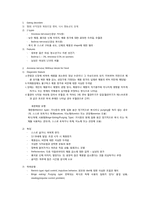
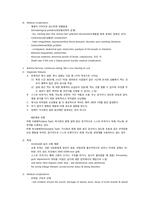
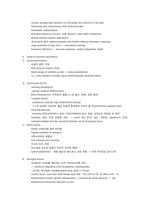
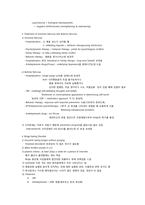
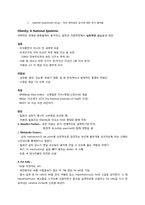
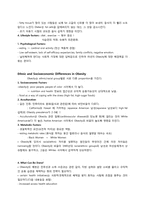
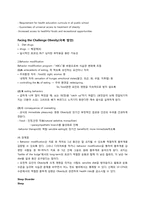
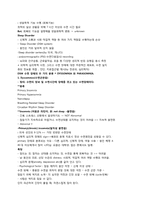
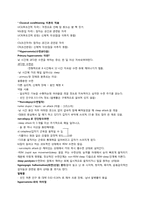
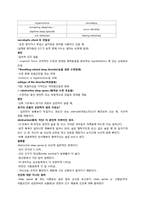

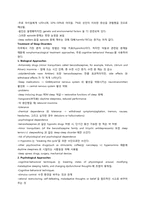
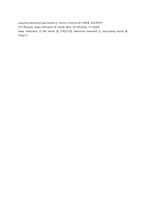
 분야
분야

